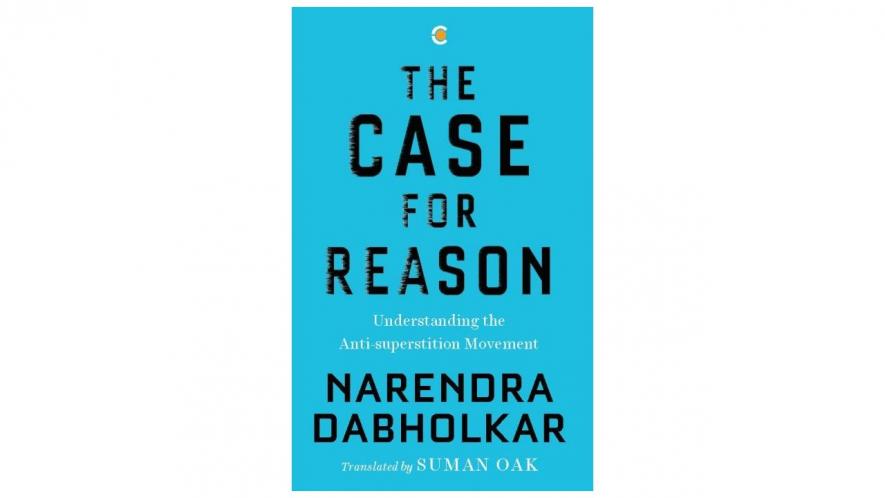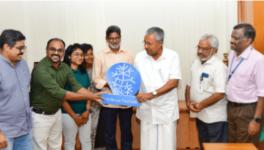The Significance of a Scientific Outlook

Image Courtesy: Context, Westland
Narendra Achyut Dabholkar was an Indian activist, rationalist and an author from Maharashtra. He founded the Maharashtra Andhashraddha Nirmoolan Samiti (MANS) for eradication of superstition in Maharashtra. He was killed by unknown assailants shortly after the Modi government came in power in 2014.
The Case for Reason: Understanding the Anti-Superstition Movement in India is a thought- provoking chronicle of battle against the superstition and blind faith in the scriptures. The book also shows the multifaceted aspect of the anti-superstition movement. It was originally published in Marathi as Timiratuni Tejakade and was later translated in English by Suman Oak. Following is an excerpt from the chapter"The Significance of a Scientific Outlook".
The significance of a scientific outlook The term ‘scientific outlook’ can be defined simply as ‘understanding the cause–effect relationship of any incident or examining the cause– effect relationship between two incidents’. Going by this simple definition, it must be said that Indian society has continued to remain unscientific even in the age of science. To develop a scientific outlook, one does not need to be a scientist or even a science graduate. What is required is mere curiosity to know and understand the natural laws on the basis of which the whole physical environment around us operates. The Renaissance Movement had stirred up Europe, swept away superstitions there and, to a large extent, cleansed the mindset of the common people. We, in India, came to know about this intellectual revolution only when the British came to power here. On achieving independence, engendering a scientific attitude became the aim of universal education and was included in the Constitution as one of the responsibilities of the Indian citizen. In practice, however, while the latest technologies were utilised for providing creature comforts and conveniences—individual and social—people, both educated and uneducated, neglected the science that drove these technological advances and made no changes to their old ways of thinking and behaving. Even six decades after independence, there is a ridiculous tendency to ridicule or condemn all that belongs to the West, exalting our own ancient traditions, proclaiming them as essential for eternal bliss. It is heatedly argued that science is not capable of bestowing tranquillity, and what is needed is spirituality. But these so-called Uncorrected proofs spirituality has nothing to do with sublime humanism; it is a path of illogic, superstition and religious fanaticism. We, who are born in the land of the Buddha, have forgotten Buddha’s enlightening stories. One of these stories (the Jataka Tales, as they are popularly known) tells us that each one of us is given a key to open the doors of heaven; but the catch is that the same key also opens the doors of hell. Science is one such key; if we go to hell using it, the fault is ours, not that of the key. What we gain from science is not only the technology that makes human life more and more gratifying, but also an understanding of the properties of non-living matter and the laws of nature. Science helps us increase our self-confidence, become fearless thinkers, develop a broad and positive outlook, and improve the quality of life by sharpening our intellect and sensitivity. This is of utmost importance for human progress. Our society raises to sainthood those who are unremittingly in search of the ultimate truth of human birth; but while we respect the search for truth at a spiritual level, we forget that trying to know the properties of non-living matter is also a search for truth. Scientists like Thomas Alva Edison, who conducted research on electrical energy and invented several gadgets that improved our lives, or the person who invented the mobile phone, or the scientist who discovered the four blood groups—all of these people have striven to discover truth and expended time and energy on it. They too are worthy of our worship. Richard Feynman who was awarded the Nobel Prize for his fundamental research in the field of nuclear power was unhappy that the work of scientists is not appreciated. He felt sad that, while poets eloquently sang the praise of springs, flowers, vales and hills, of love and affection, and of the worship of the Lord, nobody wrote any poems on wonderful truths like the structure of the universe. The study of science, Feynman says, is much more exciting than any piece of literature. The truths hidden in nature are so astonishing that studying nature satiates man’s craving for the miraculous and the marvellous. Knowledge begets power, an important material benefit, but not every form of knowledge can be linked with such gains. Again, it’s not possible for everyone to acquire knowledge in every field; yet everyone is capable of developing the keen sight that is essential for it. Nurturing a scientific outlook along with acquiring knowledge helps Uncorrected proofs develop the capacity to accurately analyse all that takes place in our personal life as well as what happens around us. When one rationally analyses the incidents and events of one’s personal as well as social life, one is relieved of the unwarranted fear and mental agony caused by it. Rational analysis will prevent a person from drawing wrong inferences in a given situation. Today, people are anxious because of the murky social atmosphere of political, religious and cultural terrorism. No doubt we must fight this terrorism, but more serious is the terror that grips the mind. Unlike the terrors forced on us from the outside, mental terror caused by superstition is self-imposed. Strangely, a person living with this terror feels gratified by it. Superstition, refusing to work with reason, fear of god’s wrath are all caused by avoiding deep thought and investigating the real cause of things that one is confronted by. To overcome mental terror and to lead a fearless life, it is essential to develop logical thinking and a scientific outlook on life.
The origin of Earth According to modern science, the age of our Earth is 4.6 billion years. Humans, on the other hand, came into existence less than a million (ten lakh) years ago. Now, if we consider the age of Earth to be one year, then humans have existed here only for the last two-and-a- quarter hours and the period from the emperor Ashoka to this day extends to a mere eighteen seconds! Different radiations emanate from the atom of the metal called uranium. Eventually, that atom decays into radium. The radium atom further emits radiation and changes into another metal. Through several such changes, finally, uranium decays into a stable metal called lead. This transformation from uranium to lead is a slow, continuous and unvarying process. Any ancient stone that has uranium in it has uranium-generated lead too. The ratio of uranium and lead present in a stone helps estimate its age. The oldest stones on Earth are 3 billion years old, which means that is when the Earth’s outer crust began forming. Naturally, the Earth must have come into being before that. The age of the meteors that struck Earth from space is about 4.6 billion years. We can, therefore, conclude that the Earth came into existence more than 4.6 billion years ago. Uncorrected proofs
Life did not exist when the Earth came into existence. It originated much later. Let us attempt to understand how life began. Life exists on Earth in innumerable forms, from unicellular beings to trees, animals and human beings. All living cells are made of a single substance; that is, protein. It is a very complex compound. Water too is a compound made of two atoms of hydrogen and one atom of oxygen. One atom of sodium and one atom of chlorine combine to form a molecule of sodium chloride (common salt). But a molecule of protein is much, much more complex; it contains millions of atoms. They are very systematically bonded with each other. A protein molecule is mainly made of carbon, hydrogen and oxygen atoms. A peculiar characteristic of living proteins is that they don’t remain stable in any one state. They are in constant motion. In this process of life, a part of the live protein becomes useless and is thrown out; and simultaneously, the same live protein absorbs nutrients from its surroundings and assimilates them. Throwing out the unwanted part, obtaining nutrients, restructuring with the help of the new nutrients is a very complex chemical process of metabolism that helps keep the body alive. Thus, life is a special form of protein existence. The process of disintegration and reintegration involves a constant give and take with the external environment. As soon as this give and take stops, life comes to an end and the protein is destroyed. The advances in biology and chemistry of late reveal that nucleic acid plays the main role in reproduction, continuation of hereditary characteristics and the generation of different proteins. So life can be called a unique form of existence, courtesy nucleic acid and protein. In the process that led to the formation of life, initially a simple compound of hydrogen and carbon—hydrocarbon—and water were formed. Later, hydrocarbon combined with nitrogen, oxygen and water to form simple compounds of four elements. In the third phase, complex compounds like nucleic acid and proteins were formed. In the fourth phase, these substances developed the special characteristics of disintegration and reintegration. In the final phase, this primitive life stuff developed further into primary life forms. From here on begins the history of the evolution of life. The primitive nucleic acids and proteins that took millions of years to form after the Earth came into existence were not alive. The real turning point is the step that followed.
Get the latest reports & analysis with people's perspective on Protests, movements & deep analytical videos, discussions of the current affairs in your Telegram app. Subscribe to NewsClick's Telegram channel & get Real-Time updates on stories, as they get published on our website.
























